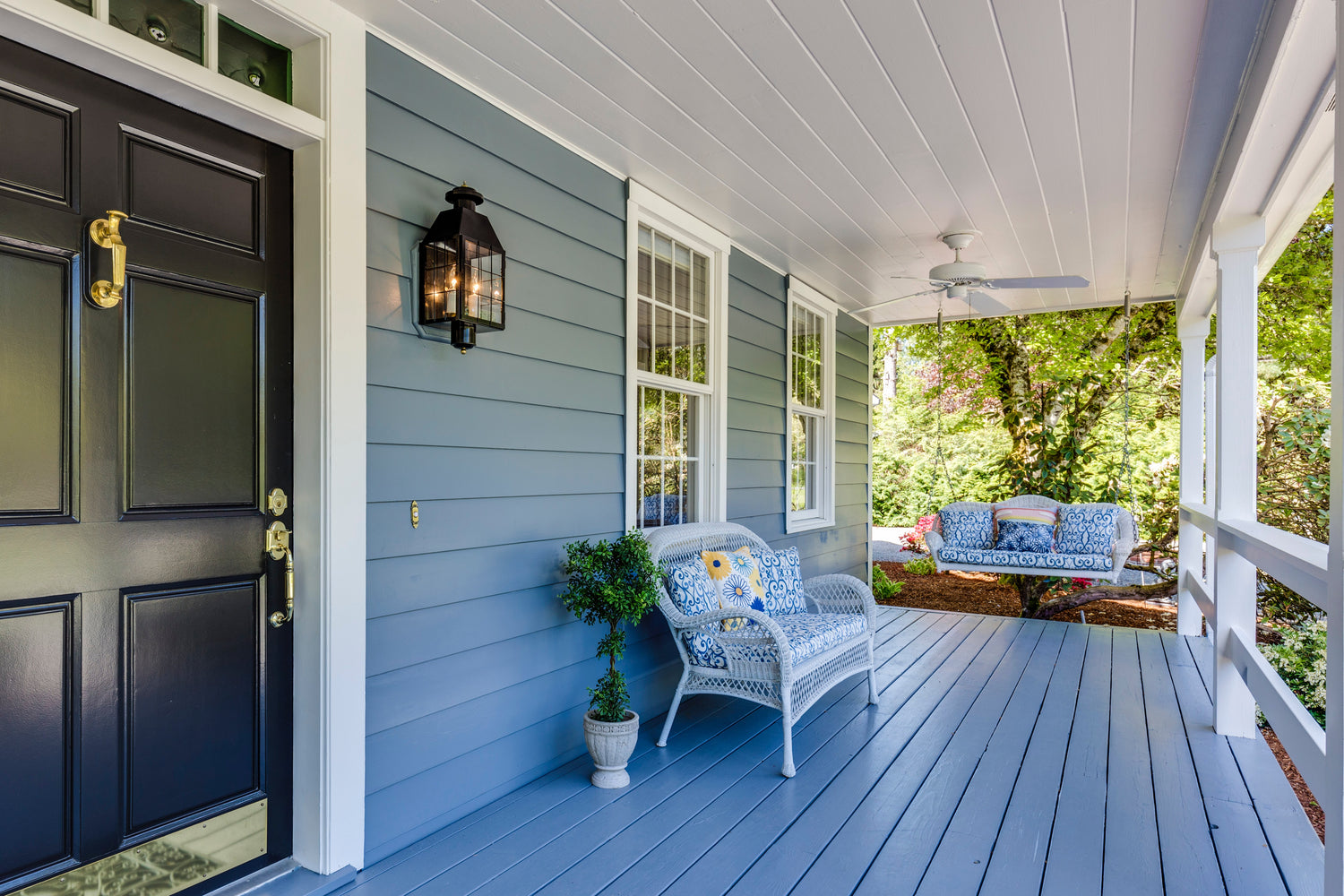
A porch swing adds undeniable charm to any home. The curb appeal is instant and the memories made around it last a lifetime. They harken back to simpler times, encouraging us to trade our smartphones for long conversations with loved ones or a quiet afternoon alone.
If you’re ready to spend a relaxing day outside, you’ll first have to know how to hang your porch swing. This first-timer’s guide outlines the best way to hang a porch swing in a few simple steps so you can start enjoying it for years to come.
Tools
You don’t need a whole tool room to find what you need to hang a porch swing. Because every installation is unique, mounting hardware and hanging hooks may not be included in your porch swing kit. However, the manufacturer will provide guidelines. For the most part, the tools you need can most likely be found in your house or at a nearby home improvement store.
- Drill
- Drill bits
- Measuring tape
- Mounting hardware
- Hanging hooks
Having a partner to help with the installation is highly recommended for safety if you don’t choose professional installation.
Structural Support
You might have an idea where you want to hang your porch swing before you make your purchase. However, confirming that your porch can support the weight of a hanging swing needs to be your first and foremost consideration.
A sturdy ceiling joist is the only structure that can safely hold the weight of a hanging swing that people can sit on safely. A joist is a large wood beam that holds the weight of the house. Essentially, a joist is to your ceiling, what a stud is to your wall.
Any weight-bearing object needs to be hung from a joist. Beadboard, plywood, or any other ceiling material will not be strong enough to hold the weight of a porch swing. A typical two-person swing can be supported by a single 2 x 8 joist, two 2 x 6 joists, or three 2 x 4 joists, according to the Home Depot.
If you have exposed beams or an unfinished porch ceiling, you’ll easily be able to see and measure the joists. However, if your porch ceiling beams are covered with beadboard or plywood, you’ll need to look underneath to determine where the joists run and if they are sturdy enough to support the weight of the swing.
You can use a stud finder to locate the joist in your porch ceiling. Southern Living also recommends gaining access to the joist from above via an attic or by removing a small portion of the porch ceiling to see how big the joists are and which direction they run. You can patch it after completing the installation.
Pick a Location

Location is everything when it comes to hanging a porch swing. Knowing where the joists are able to support the swing is a great place to start.
Next, you’ll want to make sure you have enough space on all sides. Choosing a spot that allows for at least three feet of space behind the swing, and at least 14 inches on either side will prevent it from hitting a wall or railing when it’s in motion. Give yourself two feet on either side of the porch, as well, for additional motion from the swing and so you can walk around it comfortably, Southern Living recommends.
The view is arguably one of the most important reasons to install a porch swing in the first place. Consider the orientation of your swing. For example, do you want your swing to face the street, or do you prefer to turn it perpendicular to the street for more privacy? Put a chair where you want to locate the swing so you know the type of view you’ll have once it’s mounted.
Install the Hanging Hardware

A good rule of thumb for any DIY home improvement is to measure twice before making cuts or holes. Start by measuring your porch swing to determine the exact distance between the position hanging hooks. Use a pencil to mark the spots where you’ll secure the hanging hooks to the ceiling.
You’ll have to mount the swing from two points, spaced a minimum of 64” apart. Hold the first hanging hook against the ceiling, centered on your first mark, and aligned with the joist, recommends Hayneddle. Then drill pilot holes slightly smaller in diameter than the wood screws. Securely fasten the hanging hook with two wood screws and hang a comfort spring from the hook. Then attach the chains, cable, or rope to the swing, hanging each side to the ceiling hooks so that the seat is about 17-19 inches above the floor.
Test your swing with the help of a partner to make sure it hangs evenly and swings smoothly. Place a few hardy inanimate objects on the swing prior to sitting on it to ensure its stability. Now, all that's left to do is sit back and enjoy!
No Covered Porch, No Problem

If your porch is not strong enough to support a swing, you’re still in luck. Companies like Organic Swing offer swings that can transform from a traditional outdoor porch swing into an indoor lounger that doesn’t require a porch at all.
Organic Swing's slender steel frame and inlaid cypress boards combine contemporary style and modern versatility that lasts a lifetime. But it’s the interchangeable backrest design that makes Organic Swing really stand out.
The two removable backrests can be easily reconfigured into multiple different positions by dropping the pieces into an array of square holes around the perimeter of the seat.
A porch swing provides the ultimate place for entertaining or slipping away for a quiet moment alone. And the luxury is not just for people with traditional front porches. With Organic Swing, modern porch swing, relaxing has never been more stylish and versatile.



